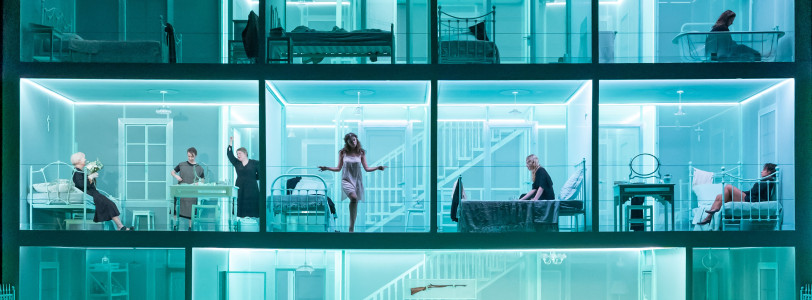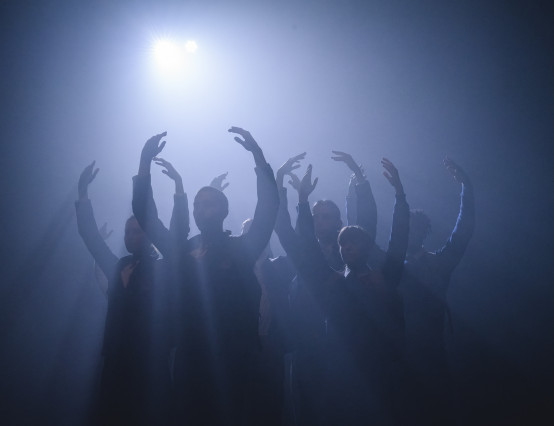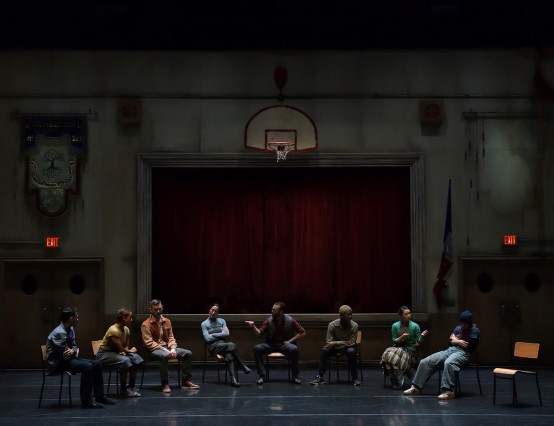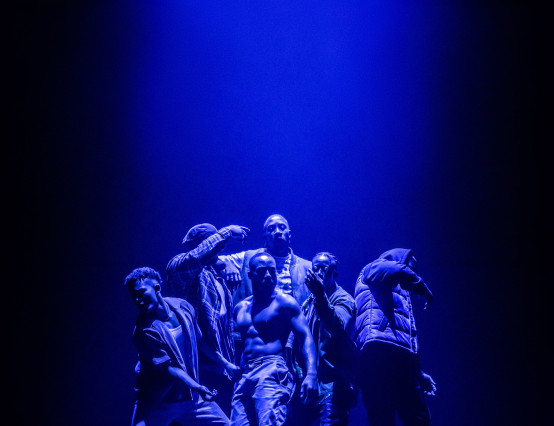Five daughters are locked up at home as Bernarda Alba, their mother, announces the 8 years of mourning they must observe. But as Poncia, the household servant, eloquently puts; they may be stuffed into cupboards, but you don’t know what’s in their ribcages.
Alice Birch’s adaptation really puts the tangled family dynamics at the fore of the story with her trademark of simultaneous dialogue. By taking Lorca’s linear story and overlapping it, it opens up new ways of understanding the different relationships between the sisters and the parallels that are drawn so poignantly when two characters in different rooms echo each other. Birch’s writing unearths Lorca’s gems by putting centre stage lesser-known scenes and by bringing out the themes which in other productions are often seemingly buried or stagnant.
Birch’s writing marries beautifully with Merle Hensel’s set design which takes the title of the play quite literally: the entirety of Bernarda’s house. This exquisitely visual design allows Birch to explore all the unwritten scenes of what the offstage characters would do to while the hours away; bringing a newfound understanding of the boredom the daughters experience in the mourning. This also opens up new opportunities for character depth such as when Bernarda Alba lovingly checks up on the sleeping distraught Adela and which so subtlety adds to the burden and pain which Bernarda gains throughout the story. However, the most poetic reading of the design is how it is reminiscent of a prison and thereby so starkly highlighting the crucial theme of oppression.
Rebecca Frecknall’s direction is inspired and visually brings to life the innate poetry of Lorca’s piece. This is appreciated in the strong vision she upholds but more notably in the movement pieces interspersed throughout the play. The often unseen and ominous Pepe is brought onto stage as his muscular presence takes over the women's thoughts. However, her intricate skill of movement pieces is most demonstrated when it dawns on Adela that the woman outside their four walls who is being stoned for aborting, could happen to her also by visualising the terrifying consequences and her extending fear to the audience.
Harriet Wallace’s Bernarda Alba is nuanced, and a refreshing take on the often-rigid character. Her dry cruelty is backed with a well of emotion beneath which makes the seemingly strong character relatable. However, this interpretation does not seem to hold Bernarda as the principal villain of the story but in fact Lizzie Annis’s overwrought and distraught Martirio poisons the fate of the household with her bitterness.
Lee Curran’s lighting cleverly directs the audience’s attention throughout the multifaceted design as well as changing our perception of the characters. At the start the backlit almost black figures shows the darkness in which they are hidden away in and contrasts so boldy to later on when Adela feels the fire within her and her passion seemingly turns her flesh red.
This ominous and chilling version is a fascinating adaption for those who know the story well and an arresting play for those who are first experiencing Lorca’s painful story.








0 Comments